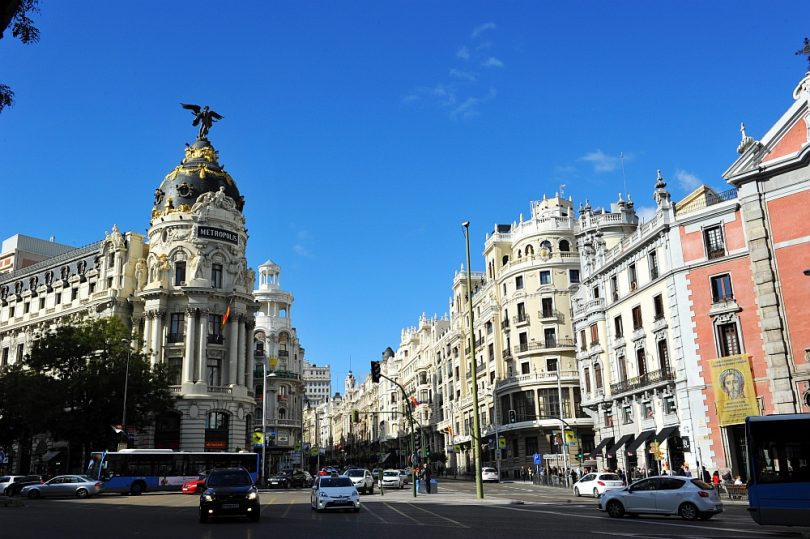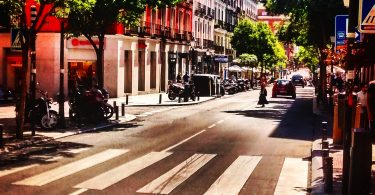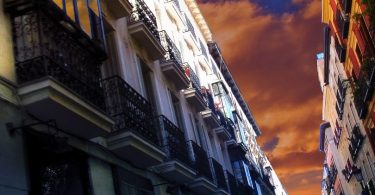The capital city of Spain is divided into 21 districts, which contain a total of 128 administrative neighbourhoods (or barrios, in Spanish). We’re not going to tell you about all of them – that would make for a long wall of text and you’d fall asleep quite fast – but we’ll list the most popular ones, together with important things you should know about each of them. So, let’s get started, shall we?
Related article: Top 5 shopping districts in Madrid
Index
Most popular barrios in Madrid
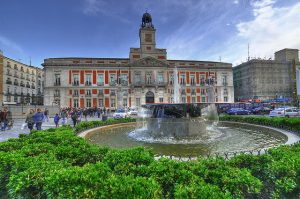
Photo by R.Duran via Visualhunt
Sol – Located in the Centro district (which, as the name would indicate, sits right at the centre of the city), Sol is the vibrant heart of Madrid. Home to the Puerta del Sol square, which is the actual geographical centre of the radial network of Spanish roads, it’s one of the city’s most popular meeting points. It features plenty of shops, restaurants and bars, as well as museums, cultural venues, and sports facilities.
Highlights: Puerta del Sol, Royal Palace and Almudena Cathedral (both just outside the neighbourhood limits), Plaza Mayor, Museo del Prado (Spanish national art museum) and Teatro Real.
La Latina – Part of the Palacio barrio in the Centro district, La Latina is a neighbourhood within a neighbourhood. Located southwest of Sol, it’s characterized by narrow streets and breath-taking historical buildings. Occupying the oldest parts of Madrid, La Latina is an obligatory visit for those looking to learn about the city’s origins and better understand its culture and traditions – during the day, that is. At night, the barrio’s dynamic nightlife turns it into a true 21st century party hub.
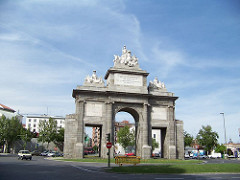
Photo by rjhuttondfw via VisualHunt
Highlights: The El Rastro flea market, San Francisco El Grande Church, San Pedro El Viejo Church, Puerta de Toledo, Teatro La Latina and the Chapel of Obispo de Madrid.
Malasaña – Officially known as “Universidad“, this is a very youthful neighbourhood with a strong countercultural scene – and it’s also considered the most hipster part of Madrid. Its nightlife is alternative and eclectic, with a few LGBT bars and an overall relaxed atmosphere. Commercially, it’s dominated by small boutiques, design studios, niche markets and, well, the kind of businesses you would expect in any place with a hipster reputation – retro stores, fancy pastry shops, gourmet butchers and all that jazz.
Highlights: San Antonio de los Alemanes Church, Teatro Lara, Teatro Victoria, Teatro Maravillas, San Ildefonso Market, Liria Palace and the Museum of Contemporary Art.
Other notable Madrid neighbourhoods
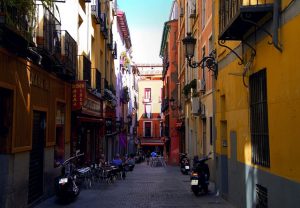
Photo by Jose Javier Martin Espartosa via Visualhunt
Huerta – To the south of Sol and popularly known as Barrio de las Letras, this is Madrid’s literary neighbourhood, having been the home of legendary writers such as Calderon de la Barca and Miguel Cervantes.
Justicia – Known mainly for its Chueca square, the epicentre of the city’s LGBT community. Lively, youthful and open-minded, it’s home to the yearly Madrid Pride Week, which makes it a very popular tourist destination.
Argüelles – Close to Ciudad Universitaria – the city’s university area – Argüelles is the preferred nightlife location for students, with plenty of discos, bars and clubs.
Related article: Living and studying in Madrid’s Argüelles
There are just some of the most important places in Madrid – not all, as there is plenty to discover in the capital of Spain. Would you like us to write about any particular neighbourhood or location? Let us know using the comment box below. Enjoy Madrid!
Looking for a flat to rent during your stay in Madrid? ShMadrid is the answer.



